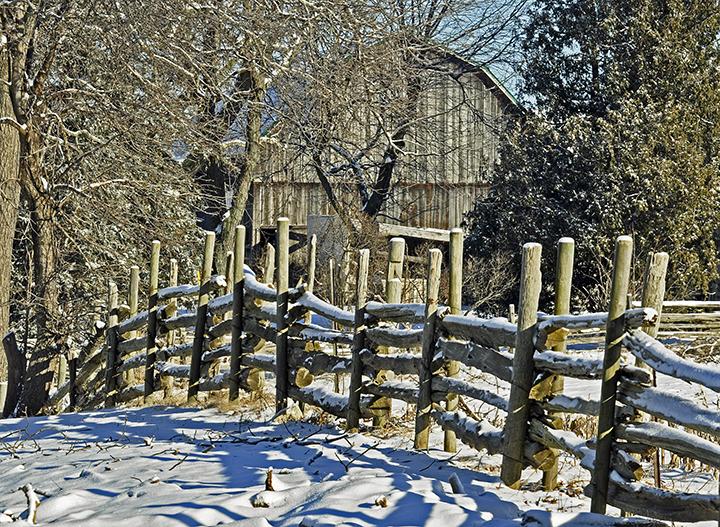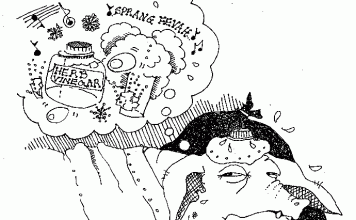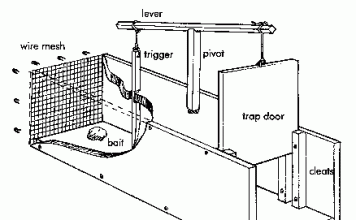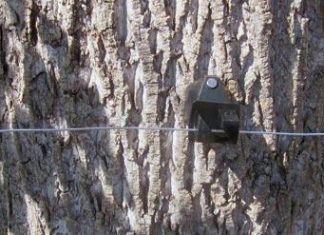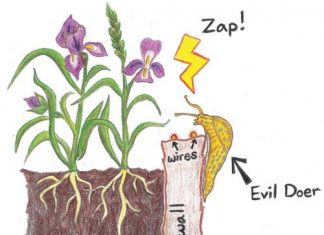| Issue #36 • November/December, 1995 |
Three boys spent several raw November days picking up black walnuts. We hoped to get a nice bit of cash when we took them to the huller. As we sat for hours in line at the huller, the price dropped. After the hulls were removed, our 900 pounds of walnuts shrank to less than 300. The $1.80 we each received seemed paltry to me, 30 some years ago.
But I learned a valuable lesson. Earnings from natural products will be minimal unless the gatherer performs at least one processing stage before selling. Had we shelled the nuts and picked the meats in the comfort of Grandma’s kitchen, we could have earned many times as much.
Just because I’ve learned a lesson doesn’t mean that I won’t have to learn it again. A couple of years ago, my sons and I were cutting eastern red cedar to sell at local sawmills. Essentially, the logs were a by-product of our clearing fence rows and cutting a roadway. Still, the cash we received seemed meager for our efforts.
Then I saw an ad in the paper placedby a man wanting to buy 200 split rails for a decorative fence. An eight-foot cedar log, six inches in diameter at the small end, would bring $3 at the sawmill. If I spent ten minutes splitting the log into four rails, I could get $12. By performing one processing step, I could earn $20 per hour cutting cedar, rather than something nearer to $4. To cut $1,000 worth of logs at the sawmill price, I might have to fell and limb 120 cedar trees, leaving a mess and depleting my timber stand. If I cut logs to split into rails, I only have to fell and limb 30 or 40 trees to come up with $1,000 of gross revenue. For the money, that’s a lot less wear on my chain saw, less sharpening, less gas and oil, less hauling, fewer opportunities for injury, and more time to spend on other activities.

Processing also reduces bulk and solves transportation and preservation problems. A classic example is whiskey. A jug of moonshine is the distillation of several bushels of corn. A mule can carry hundreds of dollars worth of moonshine, but only a few dollars worth of corn. The whiskey maker must have the knowledge, equipment, and labor required to turn a bulk commodity into something valuable enough to reach a distant market over mountain trails.
border=”0″ align=”right” hspace=”10″ vspace=”10″>
To get started splitting rails, I simply needed logs, a splitting maul, a couple of wedges, and a few minutes of trial and error experience (my college education was irrelevant). The labor involved in processing is often less demanding than that required in harvesting. Compared to felling and limbing a tree and hauling heavy logs out of the woods, splitting a log is quick and easy.
Virtually all products of mining, agriculture, and forestrywhat economists call the “primary sector”fit this pattern, whether the product is granite or gooseberries. The profit is in the processing, distribution, and retailing. When we let the middlemen have these functions, we’re just like cattle, which harvest and package grass for no reward but a period of subsistence and reproduction, only to find that their short lives are over.
Explore niche markets
Obviously, processing for mass markets involves economies of scale. It would make no sense for me to build a miniature paper mill to make paper towels for sale at local supermarkets from the softwood on my small acreage. Instead I should identify products for which economies of scale are not such a factor. Suppose I made small quantities of paper of unusual character which I could supply to local calligraphers or painters at a price they were willing to pay?
What about the popular barbecue restaurant five miles down the road? If you can be a dependable source of hickory, fruitwood, or mesquitecut, split, and seasoned according to the restaurant’s needsyou may find that you can make more money from one year-round customer than from several others who buy your firewood in the winter only, and then only if they can’t get it cheaper elsewhere.
In addition to the common agricultural products, there are hundreds of other natural products available from woods and meadows, even legally from government land, many of which can be harvested on a sustained yield basis, others of which can be cultivated. In virtually all cases, a little time developing knowledge and skill will make a big difference in whether the reward is worth the effort.
Many products and markets for seeds, grasses, botanical and medicinal plants, aromatic plants, fungi, woods for carving, turning, and cooking, weaving and dyeing materials, berries and wild fruit, and floral products are identified in the 1993 publication Income Opportunities in Special Forest Products: Self-Help Suggestions for Rural Entrepreneurs, USDA Forest Service, Agricultural Information Bulletin 666. Unfortunately, it is out of print and unavailable from the Government Printing Office. For a copy, talk to your librarian. Ask about an inter-library loan if your library does not have it. You may be able to buy or borrow a copy from your local USDA Natural Resources Conservation Service (formerly the Soil Conservation Service) or state forester.
The use of native trees, shrubs, ground covers, and flowers is on the increase in commercial and residential landscaping. You may be able to supplement your income by providing seeds or seedlings to nurseries. Many state forestry departments actually purchase seeds and operate nurseries. Collection and handling of seed requires special procedures which you must learn. Contact a government or private horticulturist or forester for assistance.
The growing use of herbal and homeopathic remedies and alternatives to traditional medicine have increased demand for many plant products. The established pharmaceutical companies also use compounds from wild plants. There are many books and periodicals about the production side of this business. Here are two of the best periodicals:
The Business of Herbs
P. O. Box 246
Shevlin, MN 56676
(218) 657-2478
Growing For Market
P. O. Box 365
Auburn, KS 66402
(No phone available)
Suffice it to say that there are opportunities for income from many plants other than ginseng and goldenseal. Niche market research is a matter of keeping your eyes, ears, nose, and mouth open. You need to examine products, especially craft products sold or made locally, and figure out whether you can supply a component. You need to listen to people in ordinary conversation; often people are expressing their frustrations about being unable to get what they wantmaybe you are in a position to supply it. Your nose will tell you which restaurants use special woods for cooking meat and which plants have fragrances which might go into potpourri. Your mouth will ask questions of people, so that you can find out what they need.
Watch for opportunities
I haven’t been besieged with orders for split rails. After I placed an ad in the local paper, I got only a few calls, and a local sawmill placed a competing ad.
However, I found a landscape nursery nearby which was willing to build a display rail fence with my rails and sell my rails “on consignment,” an arrangement under which I retain ownership of the rails until they are sold by the nursery, and the nursery retains an agreed-upon portion of the sales price. The nursery also collects the sales tax and pays it to the state, freeing me from this bother.
The nursery wants me to stockpile rails at its place of business, saying that sales are lost without inventory. If I need to take rails from the stockpile for a customer, I may, since they still belong to me. Obviously, we need to keep a written record of additions to and withdrawals from the stockpile, initialed by both of us.
Keep your enterprise in perspective and let it grow naturally. If you want to be self reliant, you must remain flexible. Until you are experienced and successful with natural products, avoid large capital investments. Instead, focus on gaining knowledge and using a few tools to supplement your income. You may find that you can earn a thousand dollars or so in each of the four seasons, spending only a little for books, tools, and equipment, and you’re sure to find some endeavors unprofitable. You need time to learn the reliability of the supply and demand for various products and to find out what you do well.


